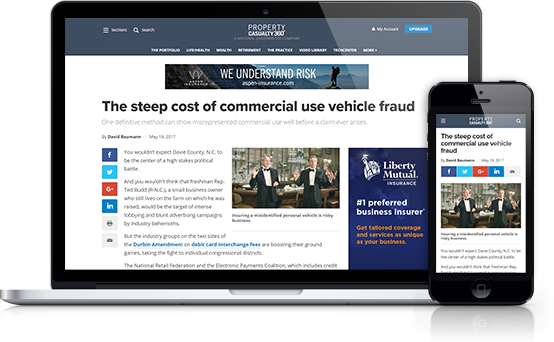 Business Interruption (BI) insurance often has been seen by risk managers as a "smoke and mirrors" portion of an insurance contract. Terms such as "necessary suspension of operations," "period of restoration," "continuing normal operations incurred," and "extra expenses" have companies with a business loss looking for their brokers, forensic accountants, or public adjusters to assist them in preparing the documents to quantify the loss.
Business Interruption (BI) insurance often has been seen by risk managers as a "smoke and mirrors" portion of an insurance contract. Terms such as "necessary suspension of operations," "period of restoration," "continuing normal operations incurred," and "extra expenses" have companies with a business loss looking for their brokers, forensic accountants, or public adjusters to assist them in preparing the documents to quantify the loss.
A variety of ways define the business losses in first-party policies, including the business interruption form. Business interruption occurs when an insured suffers loss or damage to physical property (real or personal) by a covered cause of loss, and a loss of earnings or suspension of operations ensues. For example, a fire damages an insured's building and equipment, and the business is suspended for six months.
5 Steps to Calculate Business Interruption Coverage
|- Review the insurance policy for covered causesKeep in mind that the policy has to be triggered by a covered peril in order to allow the policyholder to recover any loss of income.
- Confirm that the potential for makeup is included in the policyAssume that the insured was losing not only gross revenue but profits from net income and fixed costs that cannot be recovered. The potential for makeup is viewed as an obligation of the insured under the "Conditions" of the policy and forms part of the basis for the contract. To keep it simple, let's assume that the business suffering the fire does not have potential for makeup of lost income and, therefore, we need to measure a BI loss.
- Determine the period of restorationLoosely defined, "Period of Restoration" is the time in which the damage to real and personal property can be repaired or replaced and/or the insured's business is restored. What makes the BI measurement unique is that rarely does a business suffer a loss of real and/or personal property that when restored, the business immediately returns to pre-loss revenues.
- Measure the business interruption lossDetermine the revenue stream: Look at a relative, representative period of time and see what revenues the business was producing. In most cases, look at least 12 months, and perhaps 18 months, to develop a monthly value for the BI loss. If there is no seasonality in the revenue stream, just look at a representative 6 months. Determine the loss profit: Look at the Profit and Loss Statements (P&Ls) and identify the profit and operating cost components for the business. Many insureds believe that BI is the loss of gross revenues, but for the purposes of insurance, BI is defined as the loss of profit and fixed charges that continue. When the business operations are closed, the variable cost components of the operation discontinue. For example, raw materials used in production are not used, and therefore raw material costs are suspended. As the insured is not incurring or paying those variable costs, the insurance company does not want to reimburse the variable costs. Measure the fixed cost, continued and incurred: Both continuing costs and incurred costs are needed for calculating recovery. Look back at P&Ls for the 6-, 12- or 18-month period and determine if expenses are fixed (continuing) or are variable (discontinued). Put it together: Estimate the revenue stream that was lost or impacted by the event. Take the monthly revenue stream, multiply the profit and fixed components to identify the gross BI loss.
- Apply policy deductibleThe final step is a review of the policy to determine the applicable BI deductible. This deductible can be a dollar amount or a time-period deductible.
Recommended For You
Want to continue reading?
Become a Free PropertyCasualty360 Digital Reader
Your access to unlimited PropertyCasualty360 content isn’t changing.
Once you are an ALM digital member, you’ll receive:
- Breaking insurance news and analysis, on-site and via our newsletters and custom alerts
- Weekly Insurance Speak podcast featuring exclusive interviews with industry leaders
- Educational webcasts, white papers, and ebooks from industry thought leaders
- Critical converage of the employee benefits and financial advisory markets on our other ALM sites, BenefitsPRO and ThinkAdvisor
Already have an account? Sign In Now
© Touchpoint Markets, All Rights Reserved. Request academic re-use from www.copyright.com. All other uses, submit a request to [email protected]. For more inforrmation visit Asset & Logo Licensing.







